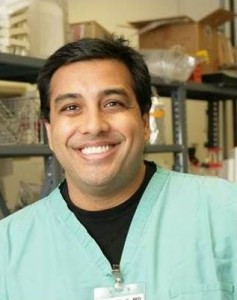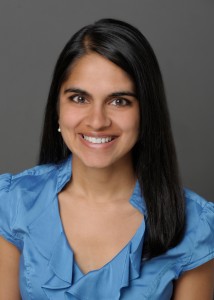ANTI-VACCINE COMMENTS HARM PUBLIC AND PRIVATE HEALTH
For pediatricians, it was déjà vu all over again.
Almost 6 months since a measles epidemic that began in California ended, sickening almost 150 – mostly un-immunized people with a disease that was eliminated in the United States over 15 years ago, three years removed from a whooping cough outbreak in Washington State and after another record year of California whooping cough cases, the public health utility of vaccines is again in the news.
As presidential hopefuls continue campaign efforts to earn our trust, it is worthwhile to remember what happened earlier this year when they shared a nationally-televised stage. Comments made by high-profile political figures about the safety and timing of vaccination again brought the issue of immunization safety to the forefront of public interest.
Then last month, an article in the Proceedings of the National Academy of Sciences (partially funded by the National Autism Association and Autism advocacy group SafeMinds) found no autistic behaviors in monkeys given vaccines. Microscopically, the brains of these animals also did not resemble those of autopsy specimens of children who had autism.
As a pediatrician who cares for sick children and works to keep healthy children healthy, doubt about vaccine safety is concerning because it nurtures misinformation about immunization, leading to potentially even more outbreaks of vaccine-preventable disease across the country.
As both a physician and a parent of two fully immunized children, I am disturbed about the hijacking of medical fact for political purposes and its interference with our partnership with parents in maintaining their child’s health.
Vaccines are safe and do not cause autism. A 2007 study published in the New England Journal of Medicine found no association between vaccines, the mercury-based preservative thimerosal contained within them and autism after testing over 40 different neuropsychiatric measures. Nine studies over more than a decade and sponsored by the Centers for Disease Control (CDC) – found no link between autism and immunization.
The Autism Self Advocacy Network states that perpetuating claims of a link between immunization and autism distracts “from real and pressing issues facing the autistic community.”
The Vaccine Schedule is safe, well tested and the only scientifically-based regimen to administer vaccines safely and effectively. The landmark 2013 Institute of Medicine report entitled, “The Childhood Immunization Schedule and Safety,” found “no evidence that the schedule is unsafe.” Any other calendar of vaccination should be considered experimental by traditional methods of scientific rigor.
Vaccines save lives. Last year the CDC, reported childhood vaccination prevents 322 million cases of disease (roughly the US population), 732,000 deaths (approximately the population of Detroit) and saved over 1.38 Trillion Dollars (roughly the Gross Domestic Product of Spain) in healthcare costs over the first few years of life. It is precisely these facts that led the Institute of Medicine to declare vaccines the “most effective and safe public health intervention to prevent serious disease and death.”
The CDC named vaccination one of the ‘Ten Great Public Health Achievements’ of the last century. The Society for Pediatric research, in partnership with 4 other leading child health organizations including our 60,000-member American Academy of Pediatrics, highlighted ‘Life saving Immunizations’ as one of the ‘7 Great Achievements of Pediatric Research.’
Vaccination prerequisites, such as requirements that children receive certain vaccines prior to school entry or that health care personnel are current with immunizations are not a political issue. These requirements are the only scientifically-tested means of attaining immunization rates which are high enough so those who are medically incapable of receiving vaccinations – such as children being treated for cancer – are also protected via herd immunity.
While the percentage of vaccinated children required to achieve herd immunity varies with each disease, the policy evidence clearly indicates that relaxing such standards, such as creating state-based “philosophical exemptions” to immunization, encourage outbreaks of vaccine-preventable disease.
Unfounded concerns over administration of “too many vaccines,” has potentially contributed to lower than target goals for vaccines against tetanus, whooping cough, 2 types of Hepatitis, several bacterial infections, infectious diarrhea, cancer-causing strains of Human Papilloma Virus and influenza – the most common vaccine-preventable disease. Low rates of vaccination coverage for these infections prevent the medical community from fulfilling the full public health promise of immunization.
Pediatricians and parents want the same things: the best care for their children and to protect them from harm. Immunizations given at the right time are one part of a national child health strategy that works best when parents’ questions about vaccination are answered by pediatric physicians and we all cooperate in the shared goal of keeping your child well.
As a scientist and a researcher who is actively seeking the cures of tomorrow, I can only hope my efforts have the health impact, success and safety of vaccines. Blanket statements by public figures questioning immunization safety gradually decay the public trust they seek to earn, and perpetuate a reprehensible practice of politicizing scientific inquiry.
Dr. Shetal Shah, MD FAAP is Secretary and Legislative Chairman of New York State (District II), Chapter 2 (Long Island) of the American Academy of Pediatrics. The views represented are his own. Follow him on Twitter @NICUBatman.


